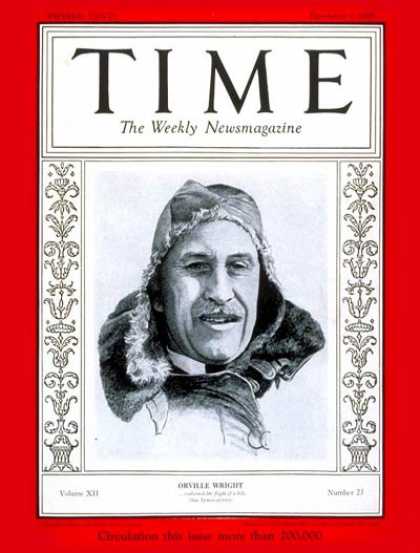 |
| Wayne, an Indian and a militiaman overlook the battlefield |
With history, it's important to gain perspective on specific events or they don't really make much sense. Like many battles, this didn't just spontaneously erupt one day. So with that in mind, the first half of this post is to give some background on what led up to this important but overlooked conflict. I did my best to be brief so it is certainly not all-encompassing and just covers what I feel are the major points. The second half concerns the actions just before the battle, the battle and its result which was ultimately the State of Ohio.
The prelude:
In the late 18th century, the newly formed United States was trying hard to eject the Shawnee, Miami, Delaware and other Indians from the Ohio country and open it for further settlement per the terms of the
Treaty of Paris
which ended the Revolutionary War. It seems the British gave away this territory to the Americans with nary a mention of the Indian claims to that land. The idea was that the British surrendered and since the Indians were allies of the British they were just included by proxy. The Brits back then had a problem with this concept it seems. As a result, the Americans felt they had a legal claim to this territory and began settling the area in droves. This did not sit well with the Indians currently living there and they fought back with somewhat covert British assistance. Yep, the same Brits who betrayed them at the Treaty of Paris! Ya see the Indians didn't have much choice but to trust the British again. It was either that or go at it alone but that would be disastrous since the British could provide much-needed supplies and intelligence from nearby Canada. The British would also benefit from this somewhat strained relationship by allowing them to keep a foothold in the territory they lost without really sacrificing any troops of their own. In a sense, the British really funded a long guerrilla war against the Americans after the end of the Revolutionary War. Sore losers.
 |
| Fallen Timbers Monument |
After the end of the Revolutionary War, the US had already been badly defeated twice in 2 years by the Indians. At
Harmar's Defeat in 1790, a campaign of a series of losses to the Indians in Ohio and again at
St. Clairs Defeat in 1791 near
present day Fort Recovery, where the Indians wiped out 1/4 of the US Army with a 97% casualty rate and minimal losses for the Indians. It was a slaughterhouse. No...really. This was the worst military defeat per capita ever in US history, much worse than the more famous
Battle of Little Big Horn
. These victories buoyed the spirits of the Native Americans in Ohio and they held on to most of Ohio for another couple of years without much major resistance.
 |
| the Great Spirit over the battlefield after a downpour |
The problem with these first two major US campaigns was that the soldiers were mostly undisciplined militia and not regular Army. It didn't help that Harmar and St Clair were not very skilled in the ways of frontier fighting and ignored warnings on Indian tactics by President Washington himself who had fought in the
French and Indian War
. It also didn't help that the Western Confederacy of Indians led by the
Miami Chief Little Turtle

, the
Shawnee Blue Jacket
, and the Delaware Buckongahelas were pretty skilled and knew the lay of the land more than the Americans. There were peace talks between the various Indian Chiefs and the Americans during 1792 where the US simply tried to buy the land to avoid more bloodshed. It was well known to the Indians that these new settlers were the poorest of the poorest whites and one observant Chief said that they didn't want the money and suggested that the US government just give the money to the poor whites and let the Indians keep their hunting grounds! Win-Win right? Eventually, the talks broke down and everyone went home. Some speculate that there was never really a serious attempt on the Americans behalf to settle this peacefully and peace talks were just a time killing ruse since while the talks were going on a new Army was being raised to finish what St Clair and Harmar had failed. President Washington appointed
General "Mad" Anthony Wayne
who had studied his predecessor's mistakes and included more disciplined regular soldiers.
 |
| my historical assistant Kelsey |
The Battle:
In 1793 Wayne set out from Cincinnati's Fort Washington, building new forts, posts, and camps along the way and training his 4,600 men well in the ways of frontier battle. He also utilized some Choctaw and Chickasaw Indians serving as scouts that provided crucial information.
Wayne also knew the Indians well and played upon the fact that per tradition that the 1,500 Indian warriors would fast before the upcoming battle so he intentionally delayed the expected battle that was to be August 19th by one day which weakened his enemy.
 |
| just a sign at nearby British Ft Miamis |
The area where the battle took place was already referred to as Fallen Timbers due to a large number of trees that had been uprooted from a tornado. The battle itself on August 20th, 1794 near present-day Toledo lasted about an hour and casualties were low, roughly 30 for each side but it was evident to the Indians that they would be overrun with this large organized force so they decided to retreat back 5 miles Northeast up the Maumee River to the
British fort of Ft Miami which was being used as a supply post. The British, still supporters of the Indians against the Americans, were not eager or authorized to engage in battle with the US and refused to lend support or let them into the fort. The demoralized Indians decided to continue north while Wayne's men slashed and burned the crops and villages left behind which resulted in a very harsh winter for the Indians. This demoralized them even further over the next year and although skirmishes still occurred in Ohio many felt there was little choice to continue fighting. Over the next year, Wayne and many the various Chiefs negotiated the resulting 1795 Treaty of Greenville which ceded most of Ohio to the Americans.
It's important to note that one young Shawnee warrior named Tecumseh who was at the Battle of Fallen Timbers did not sign the treaty and would lead a resistance movement to reclaim this land 10 years later culminating in the War of 1812 on the side of the British with his own confederation inspired by Little Turtles confederation and Pontiac's before that. Tecumseh's confederation gets more attention in the history books but Little Turtles confederation actually enjoyed a longer, larger and more successful run.
 |
| Turkey Foot Rock |
For many years the exact site of this important battle was lost to time and was thought to have been to the Southeast between where The Battle of Fallen Timbers Monument sits and the Maumee River but
archaeology evidence in the 1990's was able to help determine the location is actually to the Northeast of the monument about a quarter mile away.
Fallen Timbers Battlefield was designated a
National Historic Landmark on October 9, 1960.
The main monument and statue placed in 1962 at the site of the battle in Maumee OH is unique because it honors both sides of this battle and depicts Wayne, a militiaman, and an Indian fighter. Nearby is a
plaque honoring and listing the soldiers slain here. Another
marker placed in 1994 by the American Indian Intertribal Association commemorates the 200th anniversary of the battle and honors their ancestors and the site of Ottawa Chief Turkey Foot's battlefield's death as well.
 |
| Fallen Timbers Battle Monument |
(Front)
The Greenville Treaty
To General Anthony Wayne who organized the “Legion of the United States” by order of President Washington and defeated Chief Little Turtle’s warriors here at Fallen Timbers August 20, 1794. This victory led to the Treaty of Greenville, August 3, 1795. Which opened much of the present state of Ohio to white settlers.
(Right Side)
Indian Warfare
In memory of the white
settlers massacred 1783-1794
(Left Side)
Onward in peace
To the pioneers of Ohio
And the great northwest
(Back)
The Battle of Fallen Timbers
To Chief Little Turtle and his brave Indian warriors

 Why did such an important man die penniless and not so important? These are great questions! Washington was a good friend but his successor Thomas Jefferson was not and Tom fired him as Governor over a dispute on the boundaries of the future State of Ohio. He was very wealthy at one point but had made generous loans to various individuals and organizations including the US Government while he was Governor of the NW Territory. The US never bothered to pay him back because they didn't really have any money either. Some things don't change.
Why did such an important man die penniless and not so important? These are great questions! Washington was a good friend but his successor Thomas Jefferson was not and Tom fired him as Governor over a dispute on the boundaries of the future State of Ohio. He was very wealthy at one point but had made generous loans to various individuals and organizations including the US Government while he was Governor of the NW Territory. The US never bothered to pay him back because they didn't really have any money either. Some things don't change.














.jpeg)




